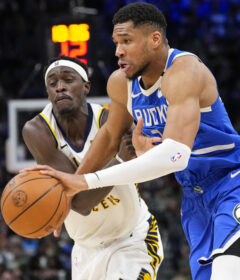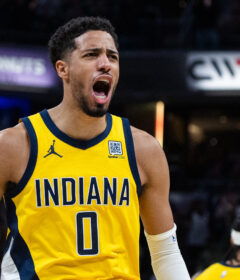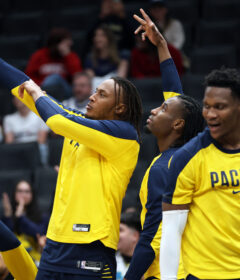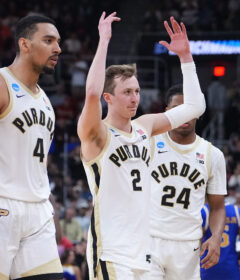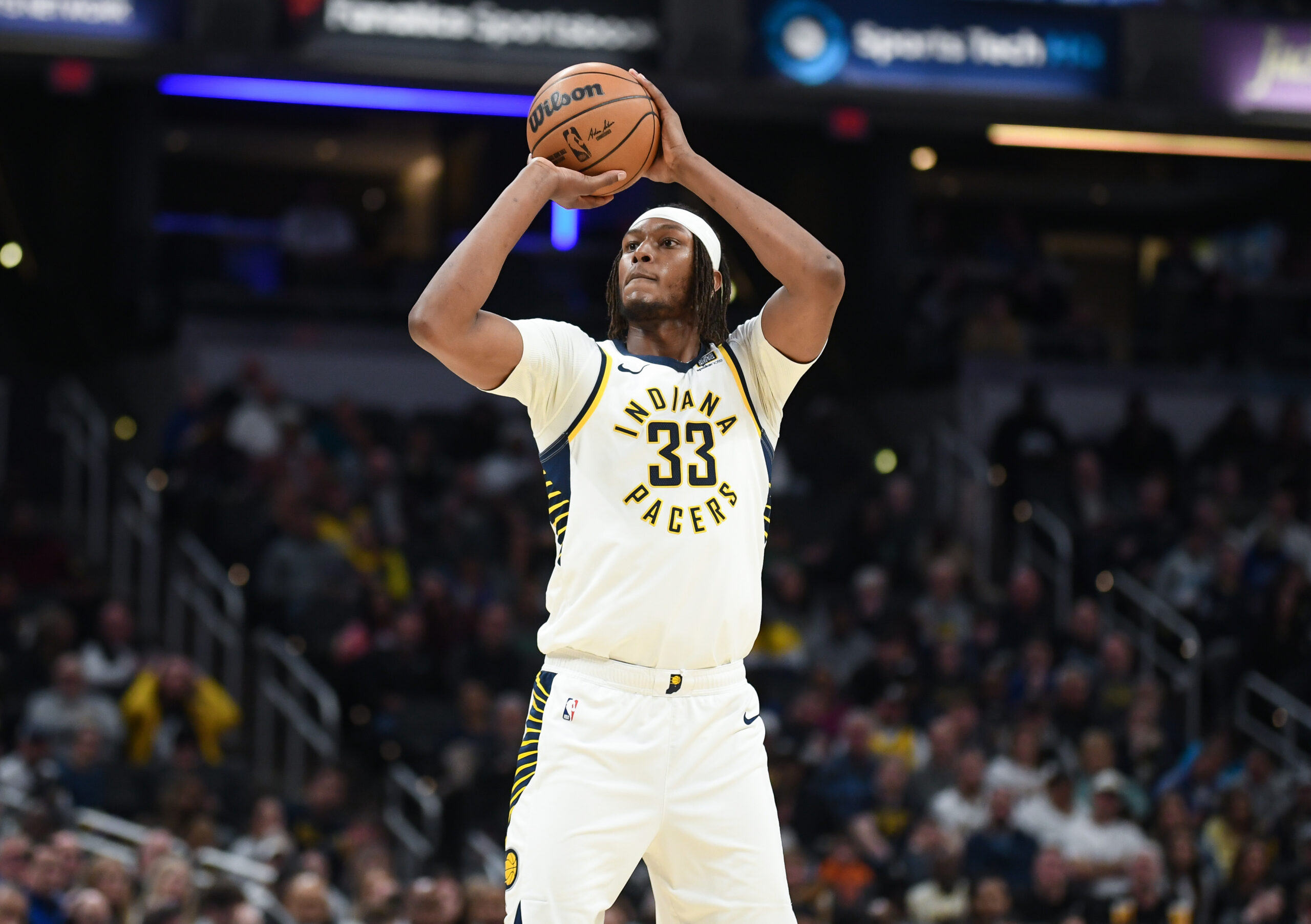Butler Preview: ‘Dawg scouting reports
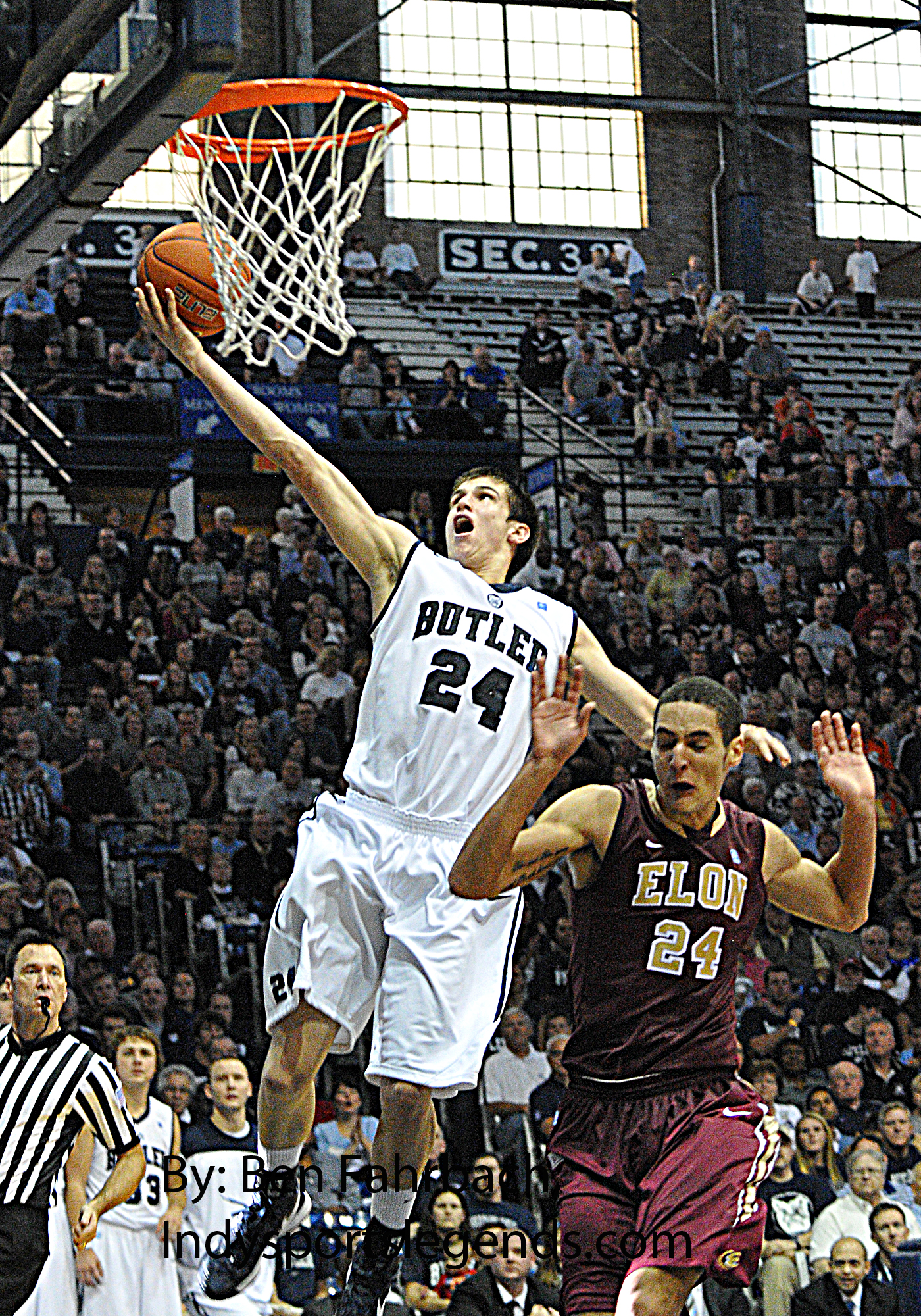
By CHRIS GOFF
ISL Assistant Editor
Before Butler’s 2013-14 season kicks off Saturday, let’s evaluate the Bulldogs’ new-look roster, player by player. Note that stats listed beneath player names are from the 2012-13 season.
ALEX BARLOW, G
Stats: 2.3 ppg, 2.7 rpg, 1.9 apg
Barlow can’t score, but at his absolute best, he can help the offense as a distributor. Though he isn’t quite a true point guard, he offered some benefit to Rotnei Clarke as an additional dribbler in the starting lineup. More of a baseball player than hardwood warrior in high school, Barlow struggles to get to the basket. He hit 65 percent of his 2s (17 of 26) but shot so infrequently that he averaged only 4.7 points per 40 minutes.
Butler knows Barlow can defend. Although he was undersized for a shooting guard, Barlow guarded with great intensity and moves his feet well. Without the advantage of experience, he has done well and has time as a junior and senior to get even better. As an athlete, he is average at best, and his foot speed is lacking. Yet Barlow has a nose for the ball and always seems to wind up in the right spots. His rebounding numbers – 5.6 per 40 minutes – were outstanding for a small guard. Most incredible is his knack for thievery. Barlow led the team and was fifth in the Atlantic 10 in steal rate.
Unfortunately, Barlow is far too turnover-prone, which offsets the steals. His turnover ratio of 35.9 was worst in the A-10, and only 24 players in Division 1 gave the ball away more frequently when they were on the court. Ball pressure and traps give Barlow all kinds of trouble. If he can’t hang onto the ball and make better decisions, the coaching staff will have to reconsider whether he’s a viable starter.
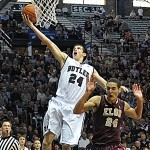
KELLEN DUNHAM, G
Stats: 9.5 ppg, 2.8 rpg
Dunham was very effective in a sixth man role, and at 20, he’s ready for more. After a slow start last season Dunham was a different player in conference action. The freshman displayed just 29.8 percent 3-point shooting before the turn of the calendar, but shot a scorching 42.5 percent through February. The truth is likely shaded more toward the latter figure, considering Dunham was an 86.7 percent marksman at the line. There are signs that Dunham still has a long way to go: He shot only 42.5 percent on 2s, had a very poor rebound rate for someone garnering NBA whispers and didn’t create much for teammates. But the upshot is that, as a jump shooter, he had a very low turnover ratio, lowest among Butler’s regulars, in fact. Also notable is that Dunham was crafty enough to draw fouls at a decent clip; his free throw rate was third-best on the team. Saint Louis coach Jim Crews lauded Dunham’s awesome shot fake and effective footwork.
At 6-foot-6, he’s large for a shooting guard and probably should move to small forward, though Butler seems to like him in the backcourt. Dunham saw minutes at the 3 when Roosevelt Jones was on the bench. Dunham averaged 14.6 points per 40 minutes – fourth on the team – despite a low usage rate. He used only 19.2 percent of Butler’s possessions per 40 minutes, a rate more in line with a minor contributor than a big scorer like Dunham. That made Dunham a highly efficient offensive player, as he left lots of other chances for his teammates to score, too. Because he made 3s, drew fouls and nailed the freebies, his true shooting percentage was 55.4, 30th in the 16-team Atlantic 10.
KAMERON WOODS, F/C
Stats: 4.5 ppg, 4.9 rpg
The slender Woods is prone to being overpowered underneath, but he is as reliable defensively as any frontcourt player on the roster. Woods had played mostly at center for Butler, but down the stretch last season began getting minutes at power forward, and his defensive aptitude at either spot is of real value. He’s 6-foot-9 and mobile. Woods’ playing time did not jump as a sophomore, but that was a product of Erik Fromm’s growth rather than any decline on the part of Woods.
Woods was second in rebound rate among all A-10 performers, and ranked third in steal rate among players his height. Meanwhile, Butler outscored opponents by 1.6 points with Woods in the game, nearly a full point and a half better than with Fromm. Woods can help fellow defenders with his ability to comfortably switch on guards and contain them. He can also block shots, although his block rate oddly went down from 7.6 to 4.2.
We already knew Woods was strong on defense, but his progress on offense last season was a pleasant surprise. Woods chipped in 7.9 points per 30 minutes with respectable efficiency, and although his jumper remains erratic, Woods adjusted by feeding in the basket area, posting a 54.7 percent mark from the field, including some highlight dunks, up from 37.0 in 2011-12.
KHYLE MARSHALL, PF
Stats: 9.6 ppg, 4.5 rpg
Marshall may not be an ideal power forward because he’s undersized at 6-foot-6, but he moves well without the ball into openings and excels on alley-oop plays. He was an extremely valuable offensive player because he created shots (7.2 attempts per game, fourth-most on the team) and converted at a high rate (56.6 percent, fourth in the Atlantic 10) with virtually no cost in turnovers. Marshall had miscues on only 10.4 percent of his possessions last season. Also, though he hit only 57.4 percent at the foul line, he did draw fouls.
Nonetheless, Marshall did not make a huge jump in his junior year, and while his talent has always enticed, the results have not delivered in a correlative manner. To fuel the naysayers, Marshall decided to post the exact same numbers as a junior that he did as a sophomore. Sure, there were some small variations if you look hard enough – his player efficiency rating was down nearly a point – but the bigger picture is that Marshall has shown a disturbingly flat development curve. It’s not simply a product of Butler adding more weapons, either. Despite additional punch in the backcourt, Marshall’s usage rate did not fall considerably. One hang-up is that, outside of the dunk, he lacks a go-to move. Adding a post game would help immensely, but he hasn’t taken a step forward in that department.
Marshall is a high character guy, and he has admitted to letting times of struggle affect him mentally. To have a good year, the Bulldogs need Marshall to put forth consistent production.
ERIK FROMM, F/C
Stats: 3.4 ppg, 2.5 rpg
Fromm has good size but no post game and takes more than half of his shots from beyond the arc. Not surprisingly, his field goal percentage isn’t much to work with and his free throw rate is low. But that hasn’t stopped Fromm from contributing. Fromm was fourth among A-10 centers in offensive rebound rate, which was especially impressive for someone who spends so much time working from the high post and setting screens. He had a double-digit PER for the first time in three seasons at Butler. As a pick-and-pop guy, he does need to shoot more accurately. Fromm hit just 30.9 percent of his 3-pointers. Perhaps an uptick is in order if his sophomore year’s 34 percent mark is indicative.
Defensively, Fromm is average at best overall. He aims for a mistake-free approach and does not try to block shots. Fromm tends to rack up fouls, as his rate of one every six minutes was extremely high. If he played the full 40 minutes, Fromm would foul out – on average – with 10 minutes left in the game.
Counting on Fromm as more than a backup center, which is a role he can handle adequately, is inviting trouble. Fromm has battled a bad back in the past but appears healthy. Keep in mind, this is the guy whose 2012-13 season included the declining health and eventual death of his father, so perhaps his final college campaign will see a less burdened version of Fromm.
ELIJAH BROWN, F/G
Stats: freshman
A key part of Butler’s 2013 recruiting haul, Brown is clearly a strong talent and a guy people are rightly excited about. Brown is a bit undersized for a small forward, which is where he’ll play most of his minutes as a freshman, but should be a decent defender. Brown moved up recruiting boards after leading Mater Dei High School to two state titles as a guard who scored in bunches.
His ability to break down defenders and penetrate should prove extremely useful as a collegian in the Big East. Butler could use another wing scorer, and looking at this team’s lineup, he’ll certainly get plenty of chances. Brown is a versatile offensive talent with a confident mentality and deep shooting ability. He’s a physical wing player who can get to the basket and finish. While Brown has some playmaking ability, he’s not a natural point guard, although Brad Stevens was tempted to train him to play there.
In high school, Brown proved tenacious on the glass, averaging over five boards a game as a senior. Any help in that area would be an ancillary benefit.
Based on his tantalizing talent and pedigree, Brown seems to have a high ceiling as far as star potential. As a result, nobody will be surprised if he has a starting job by the end of this season or the beginning of the next. Even if Butler decides to use him as a sixth man, where he’d be pretty much ideal as a shot creator with the second unit, Brown seems primed to make a major contribution from day one.
RENE CASTRO, PG
Stats: freshman
Castro has some obvious physical skills, and his path to a starting gig likely depends on his figuring out how those skills fit in at the next level. Castro likes to attack off the dribble but needs to avoid a rash of turnovers while honing his point guard instincts. He also needs to learn how to shoot.
Although he can get a step on most defenders, the key will be how well Castro sees the floor. He certainly can push the tempo and generate shots, but if he can’t feed teammates his impact will be nothing to write home about. He may struggle to defend, although his quickness figures to be an asset at that end. Castro should be able to stay in front of people and has the potential to be a ball hawk.
Castro may take his lumps as a freshman, but he offers strong upside going forward. Point guard is a position of need, and the Massachusetts product has decent size and chops as a floor general. The hope is that he can become a high-level creator and distributor.
NOLAN BERRY, F/C
Stats: freshman
He’s a project who will need some patience and may not be a useful player right out of the gate, but he can shoot and make decisions with the ball. He needs to defend and rebound to earn a larger role. Even without experience, at 6-foot-10, he’s at least an obstacle to shoot over. Berry had impressive shot-blocking rates at De Smet High School. Offensively, he has 20-foot range and is a good ball handler. He has a good feel for the game, too. Berry made 62 percent of his 2s, 81 percent of his free throws and 41 percent of his 3s as a junior at De Smet – awesome numbers for a big man.
Given his combination of size, skill, physicality and shooting ability, he’s almost certainly going to be a productive player – at best, it seems, he’ll be an offensive big man in the mold of fellow former three-star recruit Matt Howard. Nonetheless, he’s likely to earn his minutes as a second-unit energizer in the short term. Berry is very long and can get easy buckets on fast breaks.
ANDREW CHRABASCZ, F
Stats: freshman
One of those guys who just knows how to play, Chrabascz put up excellent rebounding numbers as a prep despite standing just 6-7. He has enough ball and shooting skills to become a good face-up big; at his height he’s almost certainly a 4 in college. He’s got a little bit of a post game. He’s by all accounts a hard-working, likeable guy whose ceiling is more rock solid than superstar.
The benefit for Butler is that Chrabascz can play immediately as a backup 4, and his ability to bang inside should mesh well with their preferred playing style. I won’t be shocked if Chrabascz is in the rotation by January.
JACKSON ALDRIDGE, PG
Stats: 0.8 ppg, 0.8 rpg, 0.7 apg in 24 appearances
Aldridge has not gotten traction in his career at Butler. He has been a bad shooter – he’s made 25 percent of 3s and 32 percent of 2s. Yet the truly eye-popping stat is the high turnover ratio – it was 28.0 as a freshman and was up to 32.5 last season. That type of brutal ballhandling won’t cut it. A point guard cannot make mistakes on more than one-fourth of the possessions he uses. So in spite of Chrishawn Hopkins being kicked off the team and Chris Harrison-Docks deciding at the last minute to transfer, Aldridge was still lost in the crowd, and this year sets up the same way with Barlow and Castro as more appealing options. Aldridge just doesn’t bring much to the table while managing to knock off some of the plates and silverware. That’s a crippling combination.
DEVONTAE MORGAN, G
Stats: 0.8 ppg, 0.4 rpg in 18 appearances
Minutes did not open up for Morgan as a freshman, but there’s plenty of time for him to impact the program. He is a potential stopper – at least, former coach Stevens thought so. He is a definite pogo stick, as evidenced by that lob he jammed home with one hand against IUPUI last November. Part of Morgan’s potential hinges on his position. Can he handle the ball well enough to play point guard? As a wing, does he provide enough outside shooting? He is athletic and long but with a currently thin frame.
MICHAEL VOLOVIC, PG
Stats: freshman
A walk-on, Volovic’s limitations are clear. He’s 5-foot-9, is not any kind of hot prospect and needs to add strength. Volovic improved his outside shooting numbers dramatically last season as a senior at Carmel High School, so he might space the floor, but he will need to be a pass-first guard at the college level because he’s likely going to struggle to score. His size will be a major impediment on defense, although he can be solid on that end because of his quickness, fast hands and demeanor.
STEVEN BENNETT, G
Stats: freshman
Bennett’s high school shooting numbers are darn good – he hit 41.8 percent on 3s last season. Potential as a zone-buster is what allowed Bennett the chance to walk on, and shooting is what could get him a scholarship for a few years.
The question is whether he can do anything else at an even remotely acceptable Big East level. He’s been compared to Chase Stigall, but Stigall was far more advanced defensively. Bennett seems like a much shorter Andrew Smeathers. Defensively, he will be a target as soon as he leaves the scorer’s table. He’ll have to prove so ridiculously efficient with a low-turnover, 3-point heavy game that it offsets his lack of strength and the fact that even in high school he at times hardly shot 2s.
ELLIOTT KAMPEN, G
Stats: 0.0 ppg, 0.2 rpg in 11 appearances
A scorer in high school, Kampen joined his brother, Emerson, on the team two years ago after spending his freshman year of college at Indiana University and away from basketball. His decision to walk on at Butler proved a good one for both sides. At 6-foot-5, he is big for a college wing, and he can shoot a little bit. It’s difficult to justify playing him because he would struggle to defend athletic players.
Follow Chris Goff on Twitter: chrisgoff_ISL.


